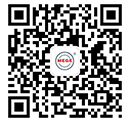Use of Time Series for Drive Systems with Different Gear Sets
06 Sep,2024

As mentioned before, the load spectrum in drive system applications must be produced separately for every gear pair when a time series has positive and negative torques/speeds, because the load on the individual gear tooth must be considered for verifications as explained in Figure 1.
Normally the frequency of torque changing from positive to negative, fTorque, is much smaller than the frequency of pinion speed, fSpeed. Let’s assume, that fTorque = 0.25 Hz (torque change every four seconds) and that the pinion speed, first stage, is fSpeed = 10 Hz (600 rpm). In this case, a tooth of the pinion gets, for four seconds, a positive load 40 times, then one load change, then a negative load 40 times. Thus, the load spectrum will contain 2.4 percent of alternating cycles and the rest will be pulsating cycles.
The pinion of the second stage will still get fTorque = 0.25 Hz, but due to the reduction of the first stage (let’s assume as i = 5), the speed will be fSpeed = 2 Hz (120 rpm). The tooth of this pinion gets, for four seconds, a positive load only eight times, then one load change, then a negative load eight times. The load spectrum will contain 11.1 percent of alternating cycles and the rest will be pulsating cycles.
As the alternating load cycles are more damaging than pulsating cycles, the load spectrum in the second stage is different and clearly more damaging than the load spectrum of the first stage.
Application of the Method on a Wind Turbine Gearbox
Figure 8 displays just the first 600 seconds of a time series during the power generation phase of a wind turbine. The torque varies significantly between 146 and 1245 kNm, and the speed is low, nearly constant in the range of 7.0 and 8.6 rpm, also called “cut-in speed.” As the torque is always positive, a gear tooth is always loaded by pulsating stress. Therefore, the simple-count method is used for the generation of the load spectrum for gear and bearing verification. The resulting torque-speed distribution is displayed in Figure 9. The load spectrum contains bins with different torque and speed values. In drive-system software the spectrum is attributed to the input coupling (on the turbine shaft) and then automatically adapted and distributed to all elements of the drive system.
For the verification of the shafts, a specific analysis of the number of cycles with bigger amplitudes is recommended. The torque variation (Figure 8) of the time series is generally low, very few times does a change from high to small torque occur. This is also evident in the resume of events shown by the rainflow half-matrix (Figure 10). Therefore, the shaft is not submitted to many significant torsional stress amplitudes. If, as discussed earlier, the torsional stress was assumed to be pulsating, then the resulting safety would be lower. The use of a rainflow analysis provides a more precise result. The obtained load spectrum is then applied at the input coupling and used for all shaft verifications. For proper verification, critical sections should be designated in every shaft of the gearbox (at positions with shaft shoulders, keyways, etc.) (see Figure 11). The verification is performed for all sections, and the most critical will be found. In the result overview (Figure 12) for every shaft the static and fatigue strength safety in the most critical section is displayed. This, combined with the bending and pitting safety factors for all gear pairs, provides a good overview of the main strength parameters of the wind turbine.












